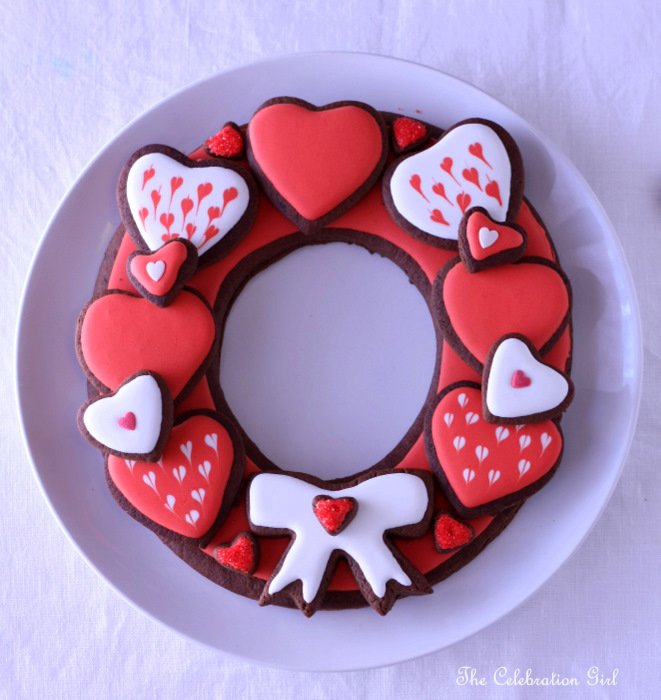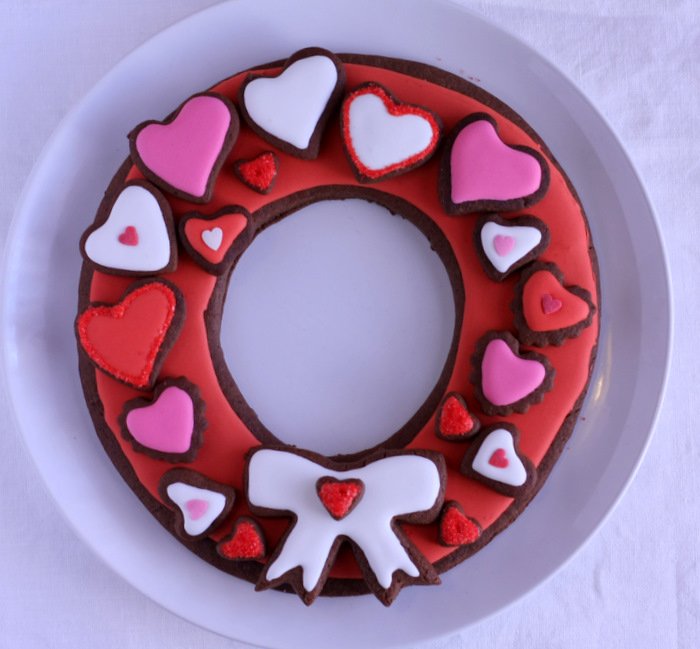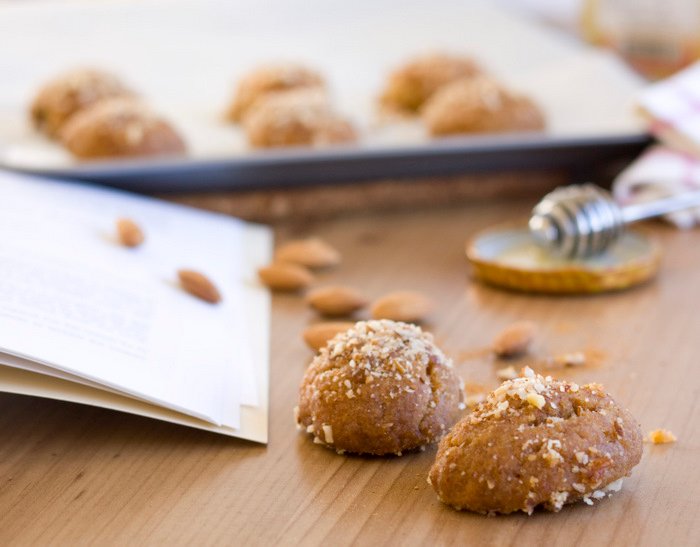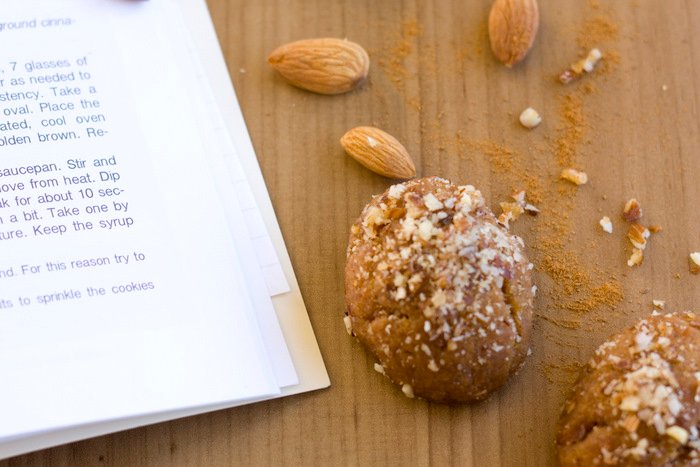by Marcela M. | May 10, 2012 | Blog, cookies, Recipe Box, Recipes, South America, Sweets, Travel, Uncategorized
Good evening dear friends! I hope you had a lovely week.
This week, we continue with our introduction to typical Argentinian sweets, the ones we, Argentinians, love and miss when we are abroad. Today, I bring you some of my favourite bite-sized sweets. All of them, except branch chocolate and nuts confit, can be found in any kiosk, so they are great for an almost guilt-free sugar rush moment. Also, all of them, except for “bocadito maroc” include dulce de leche, because most of my fellow country-men would agree that “a desert without dulce de leche is not desert”. I have changed quite a bit in this regard since living abroad, but try baking a birthday cake with buttercream, jam or lemon curd for an Argentinian child (or adult!) and you will be met with a face of sheer disappointment!

Let’s begin with Bocaditos Maroc, which are the bi-colour squares portrayed in the pictures above. They are made with a combination of peanut cream, milk and white chocolate. They are soft and truly melt in your mouth and, best of all, they are really easy to make at home so, if you want to give them a try, here’s how: Cover a square pan with foil. Process 100 grs of peeled roasted peanuts with 1 tablespoons of corn or canola oil until it reaches a pancake batter consistency. Melt 100 grs of milk chocolate and add 1/3 of the peanut cream to it. Mix well and place it in the pan, making sure it covers the pan evenly and smoothly. Bring to the fridge for about 15 minutes, so that the chocolate hardens. Melt 80 grs white chocolate and add another 1/3 of the peanut cream, mix well and pour it on top of the milk chocolate and peanut mixture. Put it in the fridge for another 15 minutes and, in the meantime, melt the remaining 100 grs of milk chocolate. Mix with the last 1/3 of peanut cream, and add it to the pan. Smooth the top with a spatula and place it in the fridge until hard. Once ready, remove from the pan, peel off the foil and cut into squares with a sharp knife (If you wet the knife in hot water, it will be easier to get a nice, clean-cut). And that’s all it takes!
The following treat is perhaps the most common of them all: Dulce de leche cones, or “Pinitos de dulce de leche”. They are simply, as you can see from the picture below, a truly decadent treat made of cookie, lots of dulce de leche disposed in a cone shape and covered in either dark or white chocolate.

If you live outside of Argentina and you are familiar with regular dulce de leche, you may be wondering how it is possible for the cones to keep their shape. The answer is this: the cones are not made with regular dulce de leche, but with dulce de leche repostero, or “baking dulce de leche”, which is firmer and thicker than the regular one (which has a jam-like consistency).
Dulce de leche repostero, unlike regular dulce de leche, is not made solely of milk, sugar and vanilla. Now, be warned, here comes a big surprise: Dulce de leche repostero has bean pulp (pulpa de frijoles) and cornstarch to give it its consistency. Argentinian friends, if you don’t believe me, go check the ingredients listed in a can…I did it back in November and couldn’t believe my eyes!
If you want to make it at home, you should know that the proportions are different from the ones for regular dulce de leche: apart from adding the above ingredients, it takes three times more sugar. So, for every 5 litres of milk (as I did in the original recipe), you will need 3 kg of sugar, 2 1/2 cups of bean pulp (made soaking the beans overnight, then boiling them until very soft and finally passing them through a sieve), 10 tablespoons of cornstarch, 1 vanilla bean and 1 tablespoon of cornstarch. The procedure is pretty much the same as for regular dulce de leche, except for the addition of the beans which has to be done after the milk and sugar mixture starts to thicken (see the first stage of browning of my earlier post on dulce de leche). Right after adding the bean pulp and mixing everything very well with a wooden spoon, you should also add the cornstarch previously diluted in half a cup of cold milk. Then let time run its course and after a few hours you should be able to enjoy wonderful baking dulce de leche!
Another special treat that I look forward to eating when I go home are nueces confitadas, or “nuts confit”:


There are many recipes and ways to make them, but most of them involve three ingredients: dulce de leche repostero (see why you should know how to make it? 😉 , walnuts and poured fondant. The most traditional way consists of surrounding a full walnut in a spoon of dulce de leche and covering it all with poured fondant. Some, however, do it in a different way (as the ones that you can see in the picture above), which consists in making a paste with dulce de leche repostero and processed walnuts, giving it a ball shape and covering each ball in either poured fondant or dark chocolate.
The following picture shows another personal favourite, called Bocadito cabsha:

They are made with host capsules (yes, like the host of catholic mass. In Argentina they can be bought at baking supplies stores), dulce de leche, glucose, rum, and chocolate. The procedure is very simple: you need to heat the glucose in a pan, together with the dulce de leche, remove the pan from heat and add the rum, and fill the capsules with this preparation being careful not to overflow them. Finally, cover the capsules in chocolate, let them cool down for it to harden and enjoy!
Finally, chocolate en rama, or branch chocolate:

If you are curious about how it is made, check this video where you can see a real maitre chocolatier at work.
See you next week, with the last post on Argentinian sweets and a few recipes!
Have a wonderful weekend!
by Marcela M. | May 3, 2012 | Blog, cookies, Recipe Box, Recipes, South America, Sweets, Travel, Uncategorized

Good morning friends! Let’s finish the week on a sweet note, shall we?
Last year, during our stay in Córdoba, I started preparing a few posts about Argentina’s sweet food culture. I could not finish writing these posts at the time, but I did take the pictures with the aim of showing you what we, Argentinians, think about when we think about sweets, what we love, what we miss when we are abroad. So here is the first of these posts, three in total, showcasing a small selection of my favourite treats. I need to give you one warning, though: there are many more sweets that I could not find in Córdoba (because they are typical of other provinces) or didn’t have the time to photograph. I also owe you a post on the candies and cookies from my childhood, which I meant to prepare, but my children kept eating the items to be photographed 😉
So, let’s begin! Today’s post is about the most popular of Argentina’s sweet treats: alfajores. But what are alfajores? And why are they called this way?
Alfajores are basically two cookies sandwiched together by some kind of sweet filling, be it fruit jam, dulce de leche, mousse or even ice cream. Their name comes from the arabic word “alajú”, and it is, in fact, an arabic confection that entered Spain during the Moorish era (during the period of Al-Andalus) and was then adopted -and modified- by the Spanish colonies. The shape and the recipes for the cookie itself and its fillings vary greatly from one country to the other, and even from one region to the other. According to wikipedia, the original confection (which can still be found in Spain) contained flour honey, spices and nuts and had a cilinder form (like a crêpe), while in Latinamerica alfajores are round and are normally filled with jams and mousses.Also, while in Spain they constitute a treat to be enjoyed mainly on special occasions (such as Christmas), except in the Medina Sidonia (where one can buy them all year long), in countries such as Argentina they are an everyday snack and can be bought in any kiosk.
Alfajores are different from a regular sandwich cookie, such as an oreo. The texture of the cookie itself is different: alfajores are moist and soft, and lack the crispiness of a traditional sandwich cookie. The filling is different as well, and more abundant. Whoopie pies, on the other side, look like an alfajor, and that is probably what we would call them back home in Argentina.

Argentina has different kinds of traditional alfajores, which differ from province to province. There are, of course, those that are available in kiosks nation-wide, produced by big candy companies, such as Arcor, Bagley or Terrabusi (owned by Kraft foods), but what is really interesting, and what I recommend you to do if you travel to Argentina one day, is to taste the regional versions, and compare them. In the following pictures I will show you some of these alfajores for you to get a glimpse at the variety you can find, and once I have tested and tweaked the recipes I brought from home, I will share them with you here as well.
The first type of alfajores I am showing you is perhaps the most famous one: Alfajor “Marplatense”, the alfajor from Mar del Plata, a seaside city in Buenos Aires province, which is also a traditional vacation spot.

Mar del Plata has many alfajor factories and, one of them, Havanna, has opened cafés and stores in several other countries, such as Israel, Spain, Mexico and the US. Havanna alfajores can also normally be found in shops that sell Latin-american products, as well as in Argentinian restaurants.
There are several types of alfajores from Mar del Plata: vanilla cookie with dulce de leche filling, covered in chocolate, vanilla cookie with dulce de leche filling covered in sugar glaze, vanilla and coffee cookie with dulce de leche filling and dark chocolate glaze, and vanilla and walnut cookie, with dulce de leche filling and covered in white chocolate glaze. They are all delicious, and their dulce de leche filling has the characteristic subtly smoky flavour that just burst in your mouth with the first bite and leaves you wanting more.



Alfajores from Córdoba are quite different, in two main aspects: the cookie is quite simple and light, the traditional filling is fruit jam instead of dulce de leche (normally, apple, pear or quince jam) and they are covered with a very simple sugar glaze made with only icing sugar and water that does not cover the cookie completely. Due to the popular love for dulce de leche, however, alfajores cordobeses with dulce de leche also exist, but they are not the traditional ones.


The cordobese confection that traditionally carries dulce de leche are colaciones, which are characterized by the crispy, curved nature of the cookie (that contains many egg yolks and a little bit of alcohol in the dough).

Alfajores from Santa Fé are also very popular. They are made of three layers of crispy, rather dry cookie (characterized because the dough has to be rolled and turned on itself 20 times, such as in the procedure for making puff pastry) , filled with dulce de leche (lots of dulce de leche, since the cookie itself is not overly sweet!) and covered with a sugar glaze made with icing sugar, water, lemon and egg whites.

Another very famous alfajor, which I couldn’t find in Córdoba to photograph, is the Alfajor Norteño (from Argentina’s North-West region), which is filled either with layers of dulce de leche and turrón, or only with turrón paste made with honey, egg-whites, sugar and walnuts.
I hope you liked this small introduction to our sweets and, worry not!, recipes will come soon!
And in case you are wondering who ate all those sweets that were photographed, it was a little blonde elf that helps me style food whenever he can…
Have a wonderful weekend!
by Marcela M. | Mar 13, 2012 | Blog, cookies, Recipe Box, Sweets, Uncategorized
Good morning dear friends!
How are you today? I hope you had a wonderful start of the week. Is the weather getting nice, warmer where you live or is winter still looming? Or are you in the southern hemisphere, anxiously awaiting the first yellow leaves of automn, and the relief of rain after a hot summer?
Here in Cyprus the weather has started to get warmer, but one last cold wave (with snow in the Troodos Mountains) has been announced before we can definitely say hello to Spring, so we are not putting our sweaters away yet. The streets, however, are already lined with yellow flowers, the orange and lemon trees are full of fruits, and the grass has turned a beautiful shade of green. The sun is starting to shine brighter, but the wind still blows colder than it will next month, once Spring will be in full bloom. This is such a nice time of the year to be here, and it is definitely the best time to come visit, in my opinion.
Even though we are not yet in Spring, I have already started getting into a Springy mood…hence these cookies! My husband had to travel to London for a few days, where he was planning to visit a dear friend who has two adorable girls aged 8 and 2 1/2, so I thought that I could add to the presents he was taking them a small box of decorated cookies. I looked into my cookie-cutter box and found a couple of sets I hadn’t used before and set myself to work. I made tulips, daisies and butterflies in different sizes and color combinations, and I played with sanding sugar and sugar pearls in some of them. Decorating is a form of meditation to me, because it allows me to focus completely in what I’m doing, and I love that.
I also made a few other cookies, from a princess set: a crown (which my daughter tried to put on her head on several occasions) a high-heeled shoe, and a pink and white castle:
And to top it all off, I added a few cupcake cookies, with red M&Ms as cherries.
My husband took some of these cookies to his friend’s daughters and the rest were enjoyed by our own children, who were very happy with them! If you have never decorated sugar cookies before, I highly encourage you to do so, it is such a fun activity!
Now about the news I announced: This blog is going to undergo a makeover! 😀
When I started blogging, almost a year ago, I didn’t have the money nor the necessary skills to make it look as pretty as I wanted to, so I simply designed a basic header using a tutorial from Makin’ cute Blogs and a background using a free background generator that I found online. It was ok for a start but it was not what I wanted and, ever since then, I have been looking for ways to beautify my little corner on the internet.
A few weeks ago, I read about a design makeover giveaway being offered by Jessica Sims Design, so I entered it…and I won! I had never won anything in my life before this, so you can imagine how happy I was! I have now sent Jessica my ideas and she will soon get to work on them. I am also working on a few pages I want to add, in order to make this place a little bit more practical and user friendly, and once it is all ready, it will come live. I am very excited about this and I hope you will like the end-result!
I will be back later this week with a few travel related posts about our family trip to Argentina.
See you soon and have a great day!
by Marcela M. | Jan 24, 2012 | Blog, cookies, Holidays, Parties, Recipe Box, Recipes, Sweets, Uncategorized

Good afternoon dear friends! How are you today?
These past weeks I have been absent from the blog, and I apologize for that. As I mentioned in my previous post, I had been preparing two surprises for you. The first one, was the dessert table for Chinese New Year, and here is the second one: A tutorial for making the chocolate cookie heart wreath pictured above, which I designed for Catch my Party!
When my Christmas breakfast table was featured as Catch my Party’s Party of the Day, Jillian mentioned that she was going to pin the holly wreath to make it next year and I offered to prepare a tutorial for her. She loved the idea and suggested, instead, a cookie wreath for Valentine’s day! So I set myself to work!
If you would like to know how to do this, including how to decorate each type of cookie, hop over to Catch my Party!
I will show you how to decorate tons of cookies…

..how to put together a wreath like this one:

or like this other one…

…how to draw hearts with royal icing…

…how to outline with sprinkles…

…and how to outline with sanding sugar.

And if you have remaining cookies after assembling the wreath, you can enjoy them with milk…

Or even prepare cute Valentine’s day presents for your loved ones!

I have also included templates of the cookies I used, so go to Catch my Party now and happy baking!
by Marcela M. | Dec 25, 2011 | Blog, cookies, Europe, Holidays, Recipe Box, Recipes, Sweets, Travel, Uncategorized

Hello my dear friends!
It is almost evening time here in Nicosia and we are getting ready to start cooking our Christmas dinner. Since we are expats, with no nearby family, this is generally a very quiet moment for us, far from the running, shopping and cooking craze that December generally brings. Family is always missed, but there is comfort and joy in knowing that we are together is our hearts.
One of the advantages that I see in this way of living, is that we get to choose the traditions we love and we want to incorporate into our own celebrations as a little family, and to change them and adopt new ones as it pleases us. So, when it came to choosing how to spend our Christmases, we opted for a quiet dinner at home on the eve, and a bigger, yet intimate, celebration on the actual day of the holiday. Our kids are still rather small, and they haven’t started school yet, so they don’t have many expectations about these dates…so they are doubly surprised and overjoyed when they discovered their presents and special treats on the 25th!
One of the treats that I make since we live in Cyprus are some special Greek cookies called Kourambiedes. They were the first sweet I had when I arrived in Nicosia and I loved them immediately. They are eaten on Christmas day, and at other celebrations, such as weddings. They have cinnamon, almonds and rose water, and they melt in your mouth!
So, if you feel like baking something different these days, do try them! They are very easy, and fun for baking with kids!
Here is the recipe:
Ingredients:
{for the filling}
30grs almonds
1 teaspoon cinnamon
1 teaspoon sugar
{for the dough}
1 egg
1 teaspoon brandy/cognac
1 teaspoon vanilla extract
100grs butter, at room temperature
1/4 cup sugar
1 cups all purpose flour
{for dusting}
rose water (1/4 cup, approximately)
icing sugar (approximately 3 tablespoons)

1)Preheat the oven at 150C/300F
2) Process the almonds, sugar and cinnamon until the almonds are coarsely ground (do not over do it, you don’t want them to turn into powder)
3) Beat slightly the egg, vanilla and brandy. Cream butter and sugar with a wooden spoon and add it to the egg mixture. Once they are integrated, start adding flour 1 tablespoon at a time, until you have a workable dough (see picture 2)
4) Shape a piece of dough into an oval. Make a hole in the middle, put 1/4 teaspoon of the almond and cinnamon mixture in it and close it, as shown in picture 3
4)Place the cookies on a baking sheet and bake for about 45 minutes or until barely golden (Keyword: barely! Do not let them brown!)
5) Put the rose water on a glass and get a brush ready. As soon as you remove the cookies from the oven, paint them with rose water. (The difference in temperature will allow the rose water to be absorbed by the cookies, so do not let them cool down).
6)Let the cookies rest for about 3 to 4 hours. After they are dry, dust icing sugar over them and they are ready!
They taste delicious with a cup of tea and they last for a couple of weeks if you keep them in an airtight container.

May you have a wonderful Christmas, full of love, peace and joy.
————————
Este post está dedicado a mi amiga invisible, y compañera de andanzas fotográficas, María. Feliz navidad!!!!!!
by Marcela M. | Dec 22, 2011 | Blog, cookies, Europe, Holidays, Recipe Box, Recipes, Sweets, Travel, Uncategorized

Good afternoon dear friends!
I apologize for my silence over the past few weeks. I had originally intended to write a few posts before but, as it turns out, coming back home after a 7 week trip with twin toddlers required to readjust them to the old routine, to Nicosia’s weather and time zone (there is a 5 hours difference between Argentina and Cyprus) and to our normal life, in general. So these days we have been juggling regular work and study schedules with middle-of-the-night wake-up episodes, piles and piles of clothes for washing, folding, ironing and putting away, and a sort of “pre-spring”clean (always due after such long trips).
In spite of all these adjustments, it is wonderful to be back home, and coming back in the middle of the Holiday Season makes it extra special. We arrived to a beautifully-decorated Nicosia, with the streets full of lights and Christmas markets, and people singing carols in the streets of downtown. And this, for a Christmas Elf such as myself, is enough reason to be happy.

On Christmas’ eve it will actually be 4 years since I arrived to Cyprus (my husband had been here for 6 months already), so this time of the year is always one of memories of years past, a time to reflect on how much our life has changed since that day. Back in 2007 there was just the two of us, and an almost-empty apartment with a bed, a sofa, an outdoor table with 4 chairs for the balcony, and a Christmas Tree that my husband had arranged for me, to make me feel at home. In the year that followed we furnished our house, we had twins, we met new people, we adapted, and Cyprus started becoming our home.

Making a place one’s home involves incorporating new habits and letting go of some others. We change, sometimes imperceptibly, with every new country we live in and those mutations are only perceived when contrasted with people and places that we have met before. As Nelson Mandela said in “A long walk to Freedom”: There is nothing like returning to a place that remains unchanged to find the ways in which you yourself have altered”.
One of the ways in which we have changed is in the food we eat, particularly during holidays and other celebrations. We approach new places also through their food and, in the process of adapting, we incorporate new flavours, we make them our own, and they travel with us wherever we go. This is the case with the cookies I will share with you today, which have come to mean Christmas to me, as much as Panettone or Turrones (which are some of Argentina’s traditional holiday sweets ).
Melomakarona are, in fact, the cookies of advent. Greek Cypriots fast during this period (they adopt a vegan diet, eliminating all animal products) and, during that fast, they snack on these cookies, which are highly caloric. Everything in their flavour speaks of this season: they take cinnamon, clove, orange, honey and walnuts, and they are dipped in syrup for extra sweetness. If you are looking for a different cookie to bake these days, I highly recommend these ones. They will fill your home with true holiday cheer!
Here is the recipe I use, as was given to me by my neighbour (and adapted by her from the book “Cyprus cooking for friends“, by Sandra Lysandrou)
Ingredients
1 cup sugar
1 cup orange juice
3 cups vegetable oil (canola)
1/2 cup brandy
1 teaspoon ground cinnamon
1 teaspoon ground cloves
1 teaspoon salt
8 1/2 cups self raising flour
5 teaspoons baking powder
{For the syrup}
1 1/2 cups sugar
1 cup honey
1 1/2 cup water
{For topping}
1 cup finely ground walnuts mixed with 1 tablespoon of cinnamon (I like to mix walnuts and almonds)
Preparation:
a-Preheat the oven at 140 C/ 284F
b- In a large bowl, mix sugar, oil, juice, brandy, spices, 7 cups of flour, baking powder and salt. Work the dough, adding the extra flour as needed, until it becomes fluffy. The dough must be oily, not dry, so stop adding flour when it becomes just workable.
b- Form the melomakaronas by taking small pieces of dough and shaping them into ovals with your hands. Note that this is a dough made with self-raising flour and a fair amount of baking powder as well, so the cookies will expand in the oven. It is consequently better to make them rather small, and to place them in an ungreased baking tray separated from each other, to give them place for growth. Bake them until the bottom is golden brown (approximately 30 minutes).
c- Allow the cookies to cool down completely and prepare the syrup by mixing sugar, water and honey and bringing them to the boil. Once the syrup boils, remove it from the heat and dip the cookies in it, soaking them for a few seconds. Note that it is very important that the cookies are completely cool when you do this, otherwise they will not absorb the syrup! For the same reason, you will need to reheat the syrup if it cools down before you are finished dipping the cookies.
d- Place the cookies on a wire rack to drain the excess syrup and sprinkle the crushed nuts mixture over them.
I hope you will like them !
































